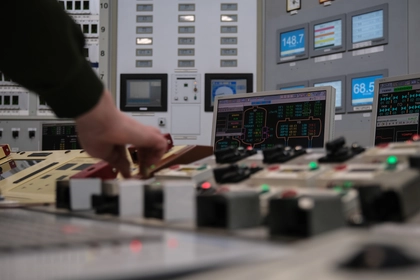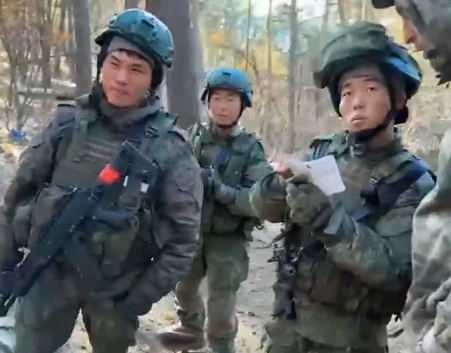More than nine thousand tons of oil and tar slowly leaking from a pair of Russian tankers lost in a winter storm has blotted north-east Black Sea beaches with oil and tar and soaked wetlands and birds, news reports and social media said Tuesday.
Local media and news stations aired images of sea birds covered in oil and unable to fly, swim or escape people. Most appeared to be pelicans, a bird native to the shoreline wetlands along the north-east Black Sea and adjacent Azov Sea coasts.
JOIN US ON TELEGRAM
Follow our coverage of the war on the @Kyivpost_official.
Russia’s national television channel Rossiya 1 aired video of Natalia Sokolova, a resident of the seaside village Volna, saying that hundreds of birds appeared to have been affected by oil slicks at sea, and forced to seek safety on beaches.
Video posted on local news platforms showed a centimeter-thick slick of black petroleum product covering the beach to high water mark, and stretching for hundreds of meters.

Images published by Veniamin Kondrat’iev, governor of Russia’s Krasnodar region, showed emergency response workers using shovels and plastic bags to collect tar thrown up on a beach near the Crimean resort village Anapa.

On Moscow streets, Trump’s peace promises dismissed ahead of inauguration
The two 5,000-ton capacity ships, the Volgoneft 212 and Volgoneft 239, had been south-bound after exiting the Sea of Azov via Kerch Strait, and had just entered the more open waters of the Black Sea when they hit severe winds and waves on Sunday.
The Volgoneft 212 snapped in half about eight kilometers off shore and sank. Most of her cargo entered the sea, news reports said. The Vologoneft 239 suffered damage from wind and waves, lost power and went adrift, and ran aground about 80 meters from the shore. On Tuesday that vessel was still aground and slowly breaking up, airborne images of the ship showed.
One sailor died and 14 abandoned ship and eventually reached safety. Two survivors reportedly suffered hypothermia. A floating crane also sank in the storm.
Authorities had deployed more than 250 workers to support containment and clean-up, and the government has the situation fully under control, governor Kontradt’iev said in a Tuesday statement.
Petro Andrushchenko, exiled mayor of the Russia-occupied Azov Sea port city Mariupol, in a Tuesday Telegram post said that the two sunk ships were actively leaking cargo and that oil and tar will likely pollute beaches and waters in the vicinity “for months.”

Russia’s head of the Ministry of Natural Resources, Alexander Kozlov, said: “It is too early to say how much fuel oil got into the sea, some of it remained in the tankers. Divers will tell us about the condition of the tanks located on the bottom… Flyby groups are working, looking for oil slicks on the surface of the water from helicopters. So far our specialists have not seen any. This may be due to the fact that due to the temperature in the vicinity, the fuel oil sank to the bottom.”
A Dec. 15 statement by the ecological protection group Greenpeace said “Russia’s militarization of the Black and Azov Seas is leading to a new environmental disaster.” The two tankers had been carrying fuel for Russia’s navy through waters where, because of wartime security, Russian authorities have switched off standard Marine Traffic GPS location, increasing chances of groundings and collisions adjacent to sensitive wetlands,” a statement from the group said.
Ukrainian news platforms reported the disaster followed from a Russian decision to send vessels not rated to handle severe sea weather, into a storm that sank them. Both tankers were relatively small river/sea ships designed primarily to operate in lakes and canals, and only able to handle moderate seas, those reports said.
According to a TSN television station Dec. 15 report, the height of sea waves reached 3.5 meters, and wind gusts reached 24 m/s (roughly, 82 kph or 53 mph). The report said the two tankers were rated to handle waves a maximum 3 meters high and wind speeds up to 20 m/s and so by design unable to operate in the sea conditions they faced. The two vessels’ old age (Volgoneft-212 was built in 1969, and the Volganeft was built in 1973) could have further compromised their seaworthiness, the report said.

The maritime accident information platform Shipwrecklog.com in a Monday analysis said that modifications of the Volganeft 212 lengthening the hull may have contributed to the vessel’s failure and sinking, because it appeared to break in half neatly along the modifications’ weld lines.
Most news reports said both tankers were fully loaded with almost 10,000 tons (71,475 BBL) of heavy fuel oil, but others put total cargo aboard the two ships at between 5,000 and 8,300 tons.
A 1,50-ton spill in the same Kerch Strait area in 2007 contaminated shorelines for dozens of kilometers and killed birds and marine life. The effects of the spill had dissipated thanks to clean-up work and passage of time after about a decade.
Prevailing winds on Tuesday were northward and highly likely to push more fuel and tar onto beaches, news reports said.
Small fuel transporters like the two Volgoneft tankers are a critical piece of Russia’s “shadow fleet” system used by the Kremlin to evade Western sanctions on Russian fuel exports. A common tactic is transport of the product from Russian a small, uninsured ship through waters not controlled by Ukraine’s allies, and then cross-loading of the fuel onto a larger, unsanctioned tanker for further transport to market in a neutral port.
Greenpeace said the load aboard the two Volgoneft tankers was fuel for Russia navy warships. Ukrainian maritime media said the two tankers had made runs to Turkey for sanction-evading cross-loading in the past.
The European Union on Monday said it had imposed maritime monitoring aimed at “shadow fleet” tankers, with the goal of limiting Kremlin sanction evasion. Coastal states around the Baltic and North Seas will deploy naval and coast guard units to inspect “suspected shadow vessels” in those waters for compliance with safety, environmental and insurance codes. Ships in violation or not stopping for inspection “will be assessed and acted upon together with our international partners”, the statement said.
You can also highlight the text and press Ctrl + Enter










